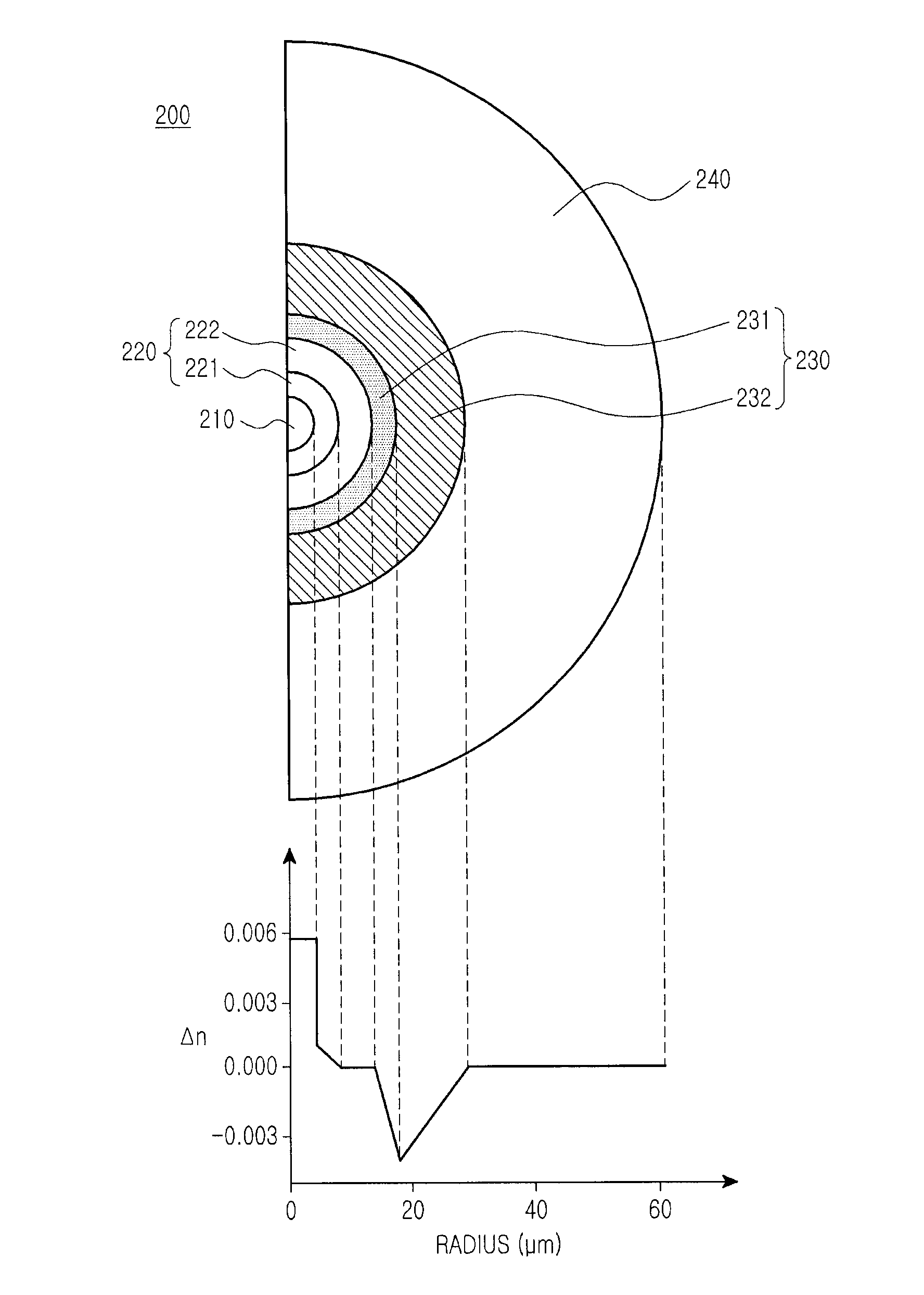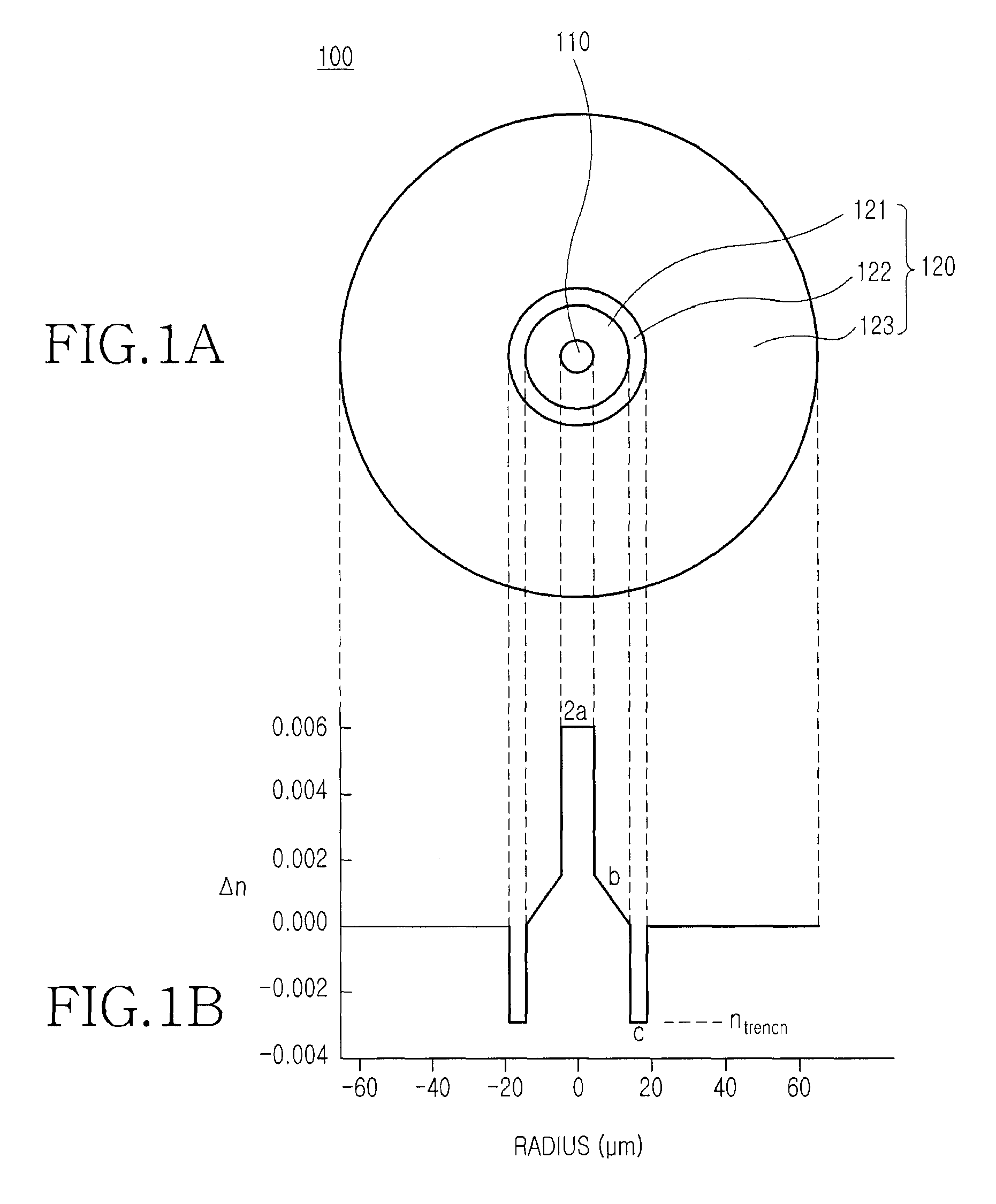Low bend loss optical fiber
a technology of optical fiber and low-bending, applied in the field of optical fiber, can solve the problems of optical fiber damage, and optical loss and data transmission problems, and achieve the effects of minimizing mode transmission, minimizing the amount of optical loss, and minimizing the chang
- Summary
- Abstract
- Description
- Claims
- Application Information
AI Technical Summary
Benefits of technology
Problems solved by technology
Method used
Image
Examples
first embodiment
[0023]FIG. 1A is a sectional view of an optical fiber according to the present invention, and FIG. 1B is a graph showing a refractive index profile according to the section of the optical fiber shown in FIG. 1A. Referring to FIG. 1, an optical fiber 100 includes a core 110 and a clad 120. The core 110 is provided at the center of the optical fiber, has a relatively high refractive index, and is for optical signal transmission through total internal reflection. The clad 120 is disposed at the outside of the core 110, and has a relatively low refractive index. In other words, the clad 120 is disposed in such a manner that it can fully surround the core 110 along the circumference of the core 110. The core 110 takes a cylindrical rod shape, and the clad 120 takes a round tube shape. The core 110 and the clad 120 are concentrically disposed.
[0024]The core 110 has a refractive index difference (Δn), which is in the range from 0.0040 to 0.0065. However, it is further preferred that the re...
second embodiment
[0042]In the optical fiber 200 of the second embodiment, since the second trench sub layer 232 having a gradually increasing refractive index distribution is disposed within the trench layer 230, the amount of optical loss due to refractive index change and bending may be minimized.
[0043]In the first embodiment, as the thickness of the trench layer 122 increases, a refractive index difference of the optical fiber 100 increases and a bend resistance is enhanced. However, a large-diameter trench structure causes higher-order modes of LP11 or more, thereby increasing a cut-off wavelength of the optical fiber 100. Herein, the cut-off wavelength means a wavelength as a boundary of a single mode from a multi mode. Also, when the thickness of the trench layer 122 is larger than a predetermined value, the cut-off wavelength is out of the range in accordance with G652 standards (1260 nm).
[0044]A calculation equation for a normalized frequency V corresponding to the cut-off wavelength is as f...
PUM
 Login to View More
Login to View More Abstract
Description
Claims
Application Information
 Login to View More
Login to View More - R&D
- Intellectual Property
- Life Sciences
- Materials
- Tech Scout
- Unparalleled Data Quality
- Higher Quality Content
- 60% Fewer Hallucinations
Browse by: Latest US Patents, China's latest patents, Technical Efficacy Thesaurus, Application Domain, Technology Topic, Popular Technical Reports.
© 2025 PatSnap. All rights reserved.Legal|Privacy policy|Modern Slavery Act Transparency Statement|Sitemap|About US| Contact US: help@patsnap.com



